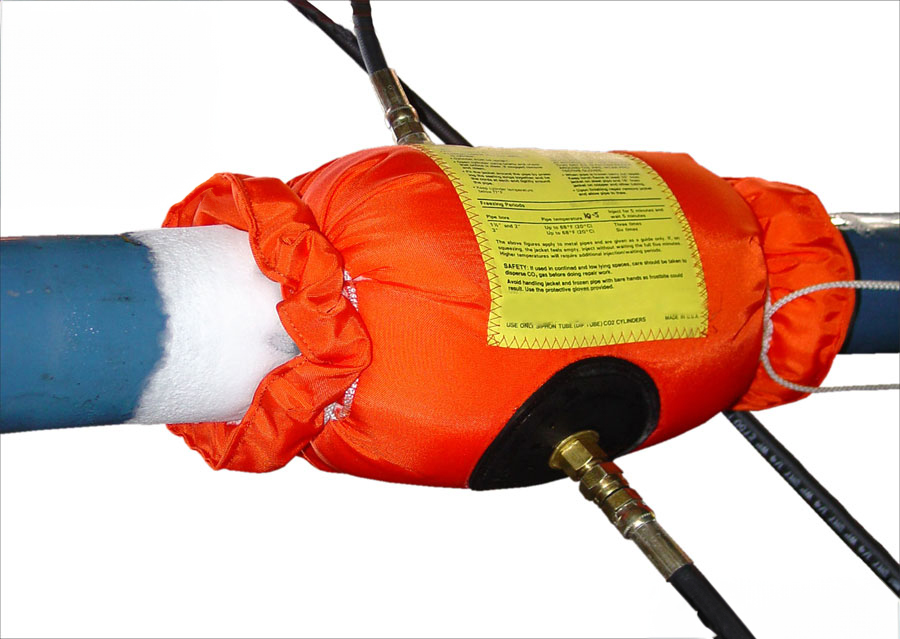


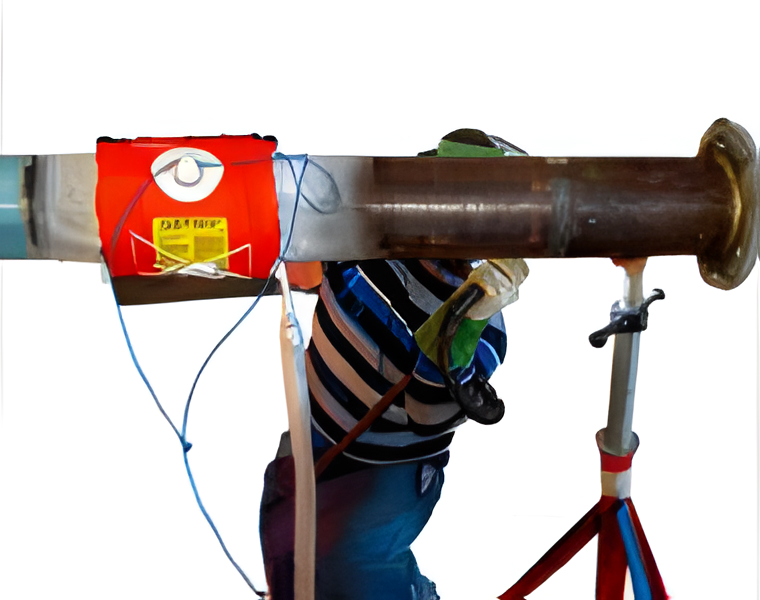





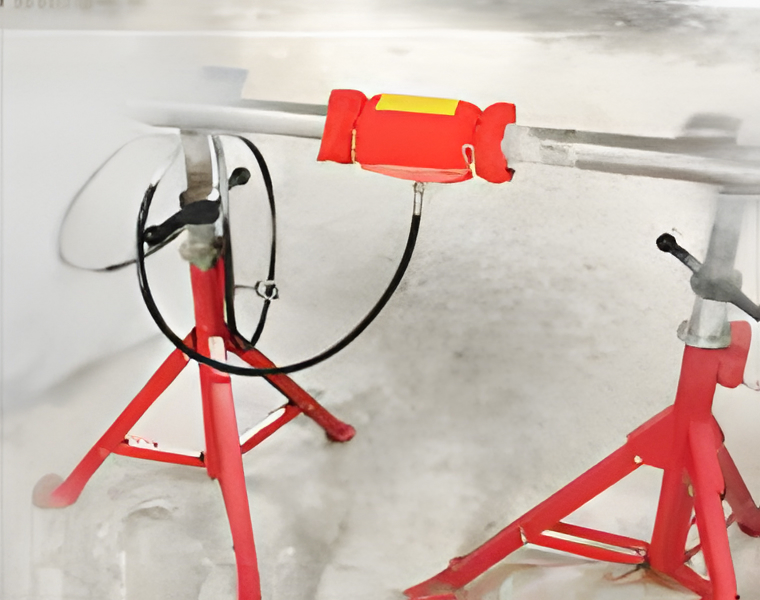


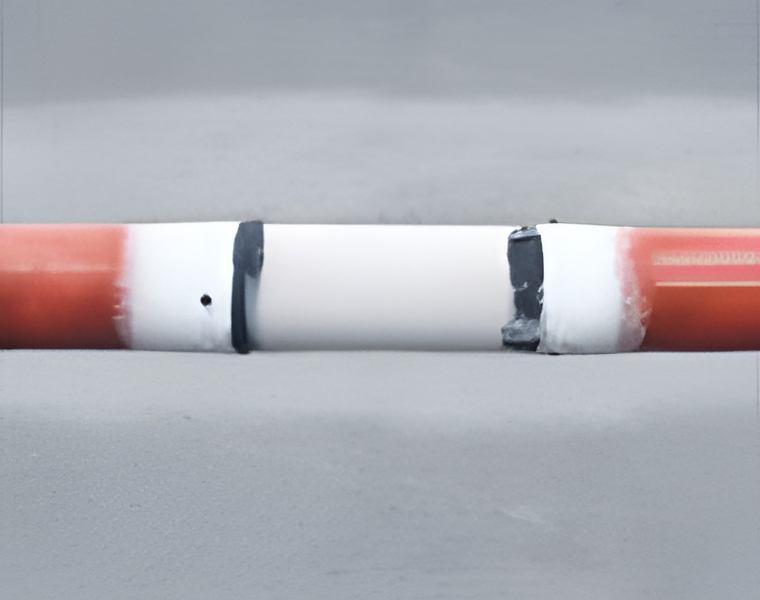




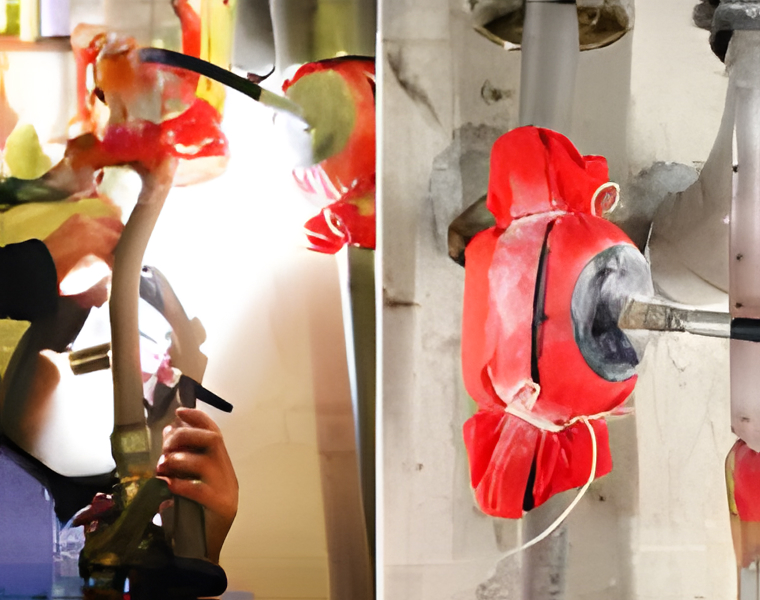







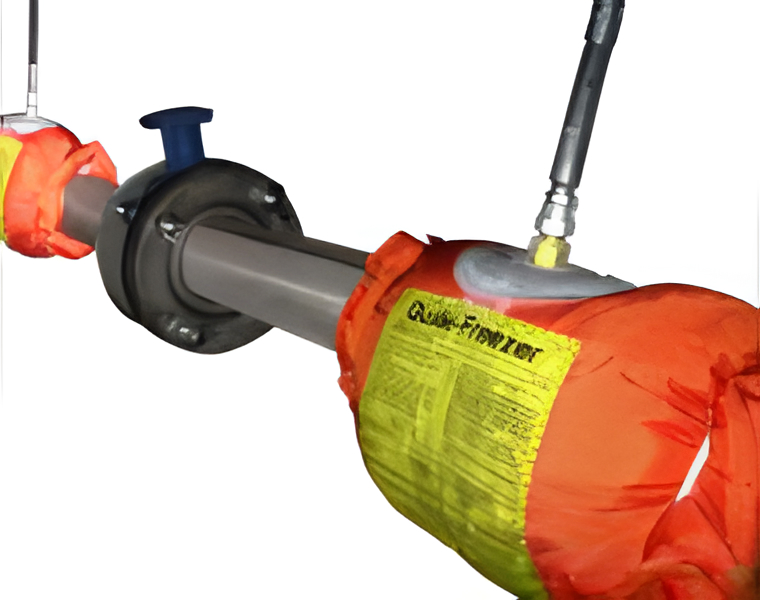
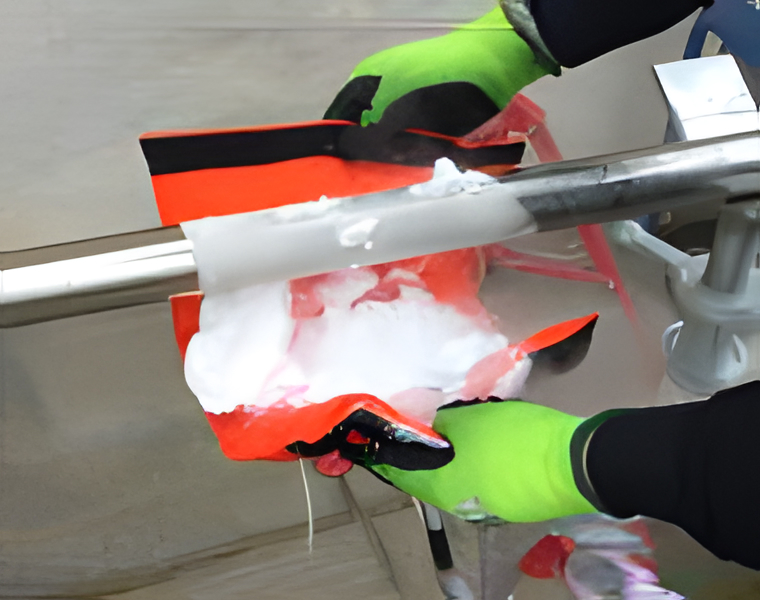











































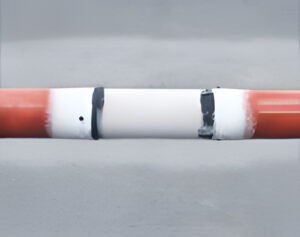

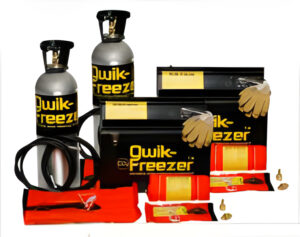




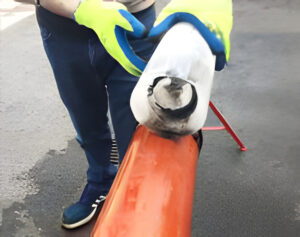









The Qwik-Freezer™ kit is easy to use. A specially designed jacket is wrapped around the pipe when the freeze is required. A nozzle on the jacket is then coupled to a cylinder of liquid CO2 by means of a high-pressure hose.
When liquid CO2 is injected into the space between the jacket and the pipe, it immediately expands to form solid carbon dioxide (dry ice) at a temperature of -70ºC (-108ºF). This low temperature quickly freezes the water inside the pipe, forming a secure ice plug that seals in the pipe. The ice plug forms only in the section of the pipe covered by the jacket, so the resulting rise in pressure is very small, and there is no damage to the pipe. The technique can be used safely on iron, lead, stainless steel, copper, brass, and plastic pipes.
Prevents the need for draining and refilling systems.
Allows repairs or modifications without shutting off the entire system.
Prevents large amounts of water wastage.
Uses inexpensive liquid CO2.
The LN2 delivery system is colder than other refrigerants.
Operators can source their own CO2, avoiding the need for costly refills or replacements.
Operators can source their own CO2, avoiding the need for costly refills or replacements.
Qwik-Freezer™ products do not require re-calibration.
Suitable for pipe and tube sizes from 3/8" to 8" (10 to 200 mm ø).
Pipestoppers® Qwik-Freezer™ is designed and manufactured to suit pipe and tube sizes from 3/8" to 8" (10 mm - 200 mm ø).
An optional second jacket is available when a double freeze is required to block flow on both sides of the valve.
Dry ice is formed when liquid CO2 interacts with the atmosphere (this takes place inside the Qwik-Freezer™ jacket). If a cylinder does not have a siphon tube, it will only deliver CO2 gas, which will have no reaction. Without dry ice, there will be no freeze.
"The purge meters are second to none."
"I am a huge fan of Huntingdon products and have talked to others over the years about using them. The purge meters are second to none. I own and use regularly my PurgEye 100 and my PurgEye 300. I think somewhere, I still have my original Argweld® MKV monitor, which sadly no longer powers up. I am a scarce breed because I have 3 degrees and a complete academic understanding of metallurgy, but more importantly, welding science; I also have over 20 years of hands-on experience in welding on drill floors, firing lines, and vessel shops. I quite literally have a passion for old-fashioned welding! Excellent product, guys!"
Davina Urquhart
CITY COLLEGE AND SENIOR WELDING ENGINEER AT TRANSWELD SERVICES LTD
"One of the best, if not the best, residual oxygen detector instruments on the market."
"I believe the PurgEye to be one of the best if not the best, residual oxygen detector instruments on the market with its digital residual oxygen level LED display readouts measuring as low as 0.01% and its large, user-friendly viewing screen making it easier for me to read. I also believe the PurgEye has great accuracy in residual oxygen, with speedy measurements displayed within seconds. The PurgEye is a far cry from the old school homemade 'use a cigarette lighter' to check purge gas flow system."
Construction and Maintenance
PIPING SOLUTIONS PTY LTD, AUSTRALIA
"Purge monitors are a necessity."
"I can personally vouch for purge monitors. When working with medium to large-diameter exotic pipework, they can prevent you from having a terrible day! I've only used the older model, which was a godsend. Anyone, from the welder who has had to carry out weld repairs due to root weld oxidation (or coking) on such materials, to the directors facing an expensive bill for re-work and possible tarnished company reputation, to the client with their project now running behind schedule - knows exactly what I mean. Purge monitors are a necessity."
Colin Sherriffs
WELDING AND FABRICATION INSTRUCTOR/ASSESSOR AT ITCA LTD